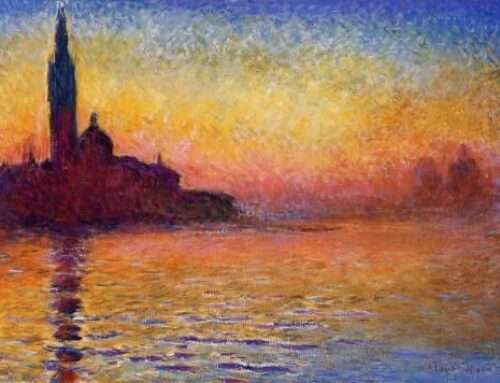Buy a Framed Reproduction Painting of Van Gogh’s Irises
Vincent van Gogh’s “Irises” is a captivating masterpiece that showcases the artist’s unique vision and emotional intensity. Painted in 1889 during his stay at the Saint-Paul-de-Mausole asylum in Saint-Rémy-de-Provence, France, the artwork depicts a vibrant bed of irises bursting with color and energy. Van Gogh’s bold use of thick, swirling brushstrokes and vivid hues imbues the painting with a sense of dynamism and vitality, capturing the essence of the flowers in full bloom.
“Irises” holds a special place in van Gogh’s oeuvre as one of his last major works before his untimely death. Despite his struggles with mental illness and personal turmoil, the painting exudes a sense of tranquility and serenity. Van Gogh found solace and inspiration in nature, and “Irises” reflects his deep connection to the natural world, serving as a testament to his enduring passion for art and beauty.
The composition of “Irises” is both intimate and expansive, with the delicate blooms filling the canvas from edge to edge. Van Gogh’s meticulous attention to detail, from the intricate patterns of the petals to the subtle variations in color and light, invites viewers to immerse themselves in the rich tapestry of the natural world. Through his expressive brushwork and keen observation, van Gogh transforms a simple floral scene into a transcendent expression of emotion and spirit, making “Irises” a timeless masterpiece that continues to inspire and captivate audiences around the world.
Want to own this piece at a fraction of the price? Head over to the C.O.R reproduction art website and take a look at what they have to offer. Any size, any frame, and at a price you won’t want to miss out on.
Ten interesting facts about Van Gogh’s Irises
“Irises” is one of Vincent van Gogh’s most famous and iconic paintings. Here are ten fascinating facts about Vincent van Gogh’s “Irises”:
- Creation during Asylum Stay: Van Gogh painted “Irises” in May 1889 while he was a patient at the Saint-Paul-de-Mausole asylum in Saint-Rémy-de-Provence, France.
- Inspiration from the Asylum Gardens: The irises depicted in the painting were part of the asylum’s garden, which van Gogh had access to and frequently found inspiration in during his time there.
- Commissioned by Van Gogh’s Brother: Van Gogh created “Irises” as part of a series of paintings he made for his brother Theo and Theo’s wife Jo. Theo was a constant supporter of Vincent both emotionally and financially.
- Bold Color Palette: The painting features a striking color palette, with vibrant blues, purples, and greens dominating the composition. Van Gogh’s use of bold, expressive colors is characteristic of his style during this period.
- Expressive Brushwork: Van Gogh employed his signature expressive brushwork in “Irises,” using thick, swirling strokes to create texture and movement throughout the composition.
- Multiple Versions: Van Gogh painted several versions of irises during his career, with “Irises” being one of the most well-known. Another notable version is “Still Life: Vase with Irises Against a Yellow Background.”
- Depiction of Nature’s Beauty: “Irises” reflects van Gogh’s profound appreciation for the beauty of the natural world. He found solace and inspiration in nature, often using flowers and landscapes as subjects for his paintings.
- Composition and Arrangement: The composition of “Irises” is carefully arranged, with the flowers depicted in a diagonal line across the canvas. Van Gogh’s meticulous attention to composition adds to the overall balance and harmony of the painting.
- Meaning and Symbolism: While van Gogh often imbued his paintings with personal meaning, the exact symbolism behind “Irises” remains open to interpretation. Some scholars suggest that the irises represent hope and renewal, while others see them as a reflection of van Gogh’s inner turmoil and struggle.
- Legacy and Impact: “Irises” is now considered one of van Gogh’s masterpieces and is housed in the J. Paul Getty Museum in Los Angeles, California. It continues to inspire art enthusiasts around the world with its beauty, emotion, and profound artistic expression.







Leave A Comment